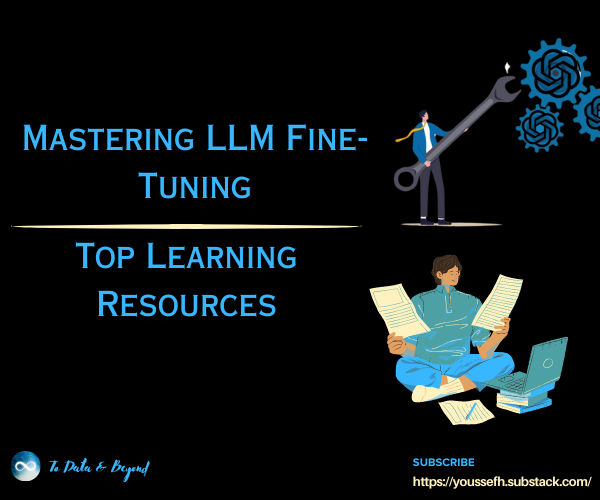
Mastering Large Language Model (LLM) Fine-Tuning: Top Learning Resources
Author(s): Youssef Hosni
Originally published on Towards AI.

Large language models (LLMs) have transformed the field of natural language processing with their advanced capabilities and highly sophisticated solutions.
These models, trained on massive datasets of text, perform a wide range of tasks, including text generation, translation, summarization, and question-answering. But while LLMs are powerful tools, they’re often incompatible with specific tasks or domains.
Fine-tuning allows users to adapt pre-trained LLMs to more specialized tasks. By fine-tuning a model on a small dataset of task-specific data, you can improve its performance on that task while preserving its general language knowledge.
In this blog, we will provide the best learning resource to learn what fine-tuning is, how it works, and how fine-tuning LLMs can significantly improve model performance, reduce training costs, and enable more accurate and context-specific results.
Also, these resources will cover different fine-tuning techniques and applications to show how fine-tuning has become a critical component of LLM-powered solutions.
Introduction to LLM Fine-Tuning 1.1. The Novice’s LLM Training Guide1.2. Fine-Tuning LLMs: Overview, Methods, and Best Practices 1.3. Finetuning Large Language ModelsParameter Efficient Fine-Tuning (PEFT)2.1. Optimizing Pre-trained Models: A Guide to Parameter-Efficient Fine-Tuning (PEFT)2.2. QLoRA paper explained (Efficient Finetuning of Quantized LLMs)2.3. QLoRA — How to Fine-tune an LLM on a Single GPU (w/ Python… Read the full blog for free on Medium.
Join thousands of data leaders on the AI newsletter. Join over 80,000 subscribers and keep up to date with the latest developments in AI. From research to projects and ideas. If you are building an AI startup, an AI-related product, or a service, we invite you to consider becoming a sponsor.
Published via Towards AI
Take our 90+ lesson From Beginner to Advanced LLM Developer Certification: From choosing a project to deploying a working product this is the most comprehensive and practical LLM course out there!
Towards AI has published Building LLMs for Production—our 470+ page guide to mastering LLMs with practical projects and expert insights!

Discover Your Dream AI Career at Towards AI Jobs
Towards AI has built a jobs board tailored specifically to Machine Learning and Data Science Jobs and Skills. Our software searches for live AI jobs each hour, labels and categorises them and makes them easily searchable. Explore over 40,000 live jobs today with Towards AI Jobs!
Note: Content contains the views of the contributing authors and not Towards AI.














